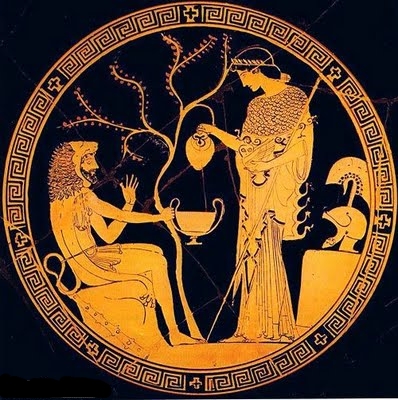Bogdan Minca‘s essay “Heidegger’s Interpretation of the Platonic Cave Allegory and Theaetetus (1931/32) as an Early Indication of Kehre and Ereignis” focuses on the lecture course The Essence of Truth, published as volume 34 of the Gesamtausgabe. The author interprets this text as the earliest document of a fundamental hermeneutical shift in Heidegger’s way of reading the thinkers of our tradition. This shift, in turn, coincides with the elaboration of the thinking of Ereignis that is first stated, in an extensive manner, in Beiträge zur Philosophie. However, the ground for that thinking, Minca suggests, is in fact prepared in the lecture course on Plato, which, as a consequence, can be considered as “a tacit elaboration of Ereignis with the help of Platonic thinking.”
Left: Athena and Heracles on an Attic red-figure kylix, 480–470 BC
